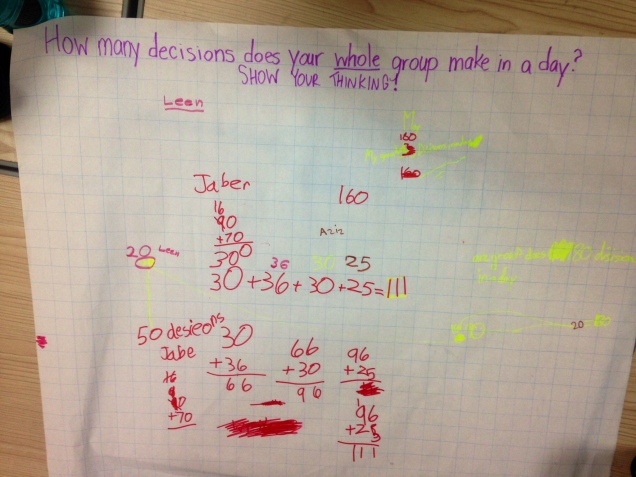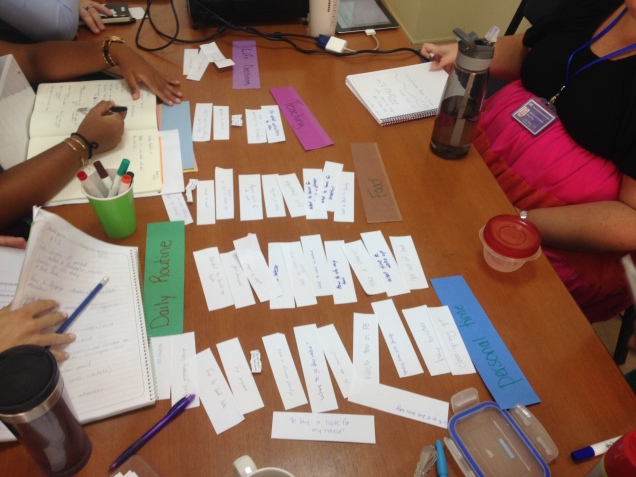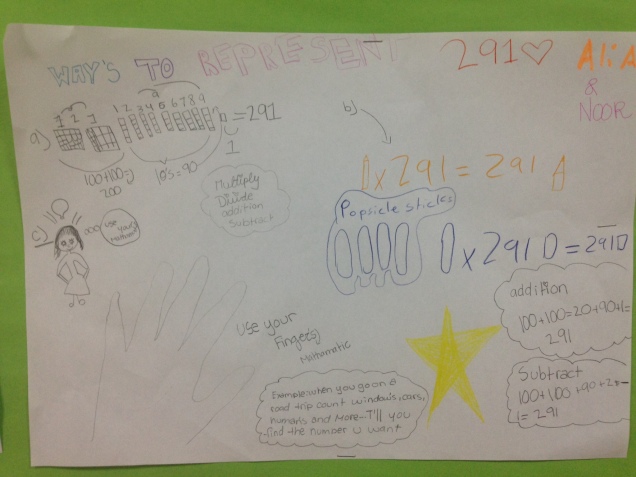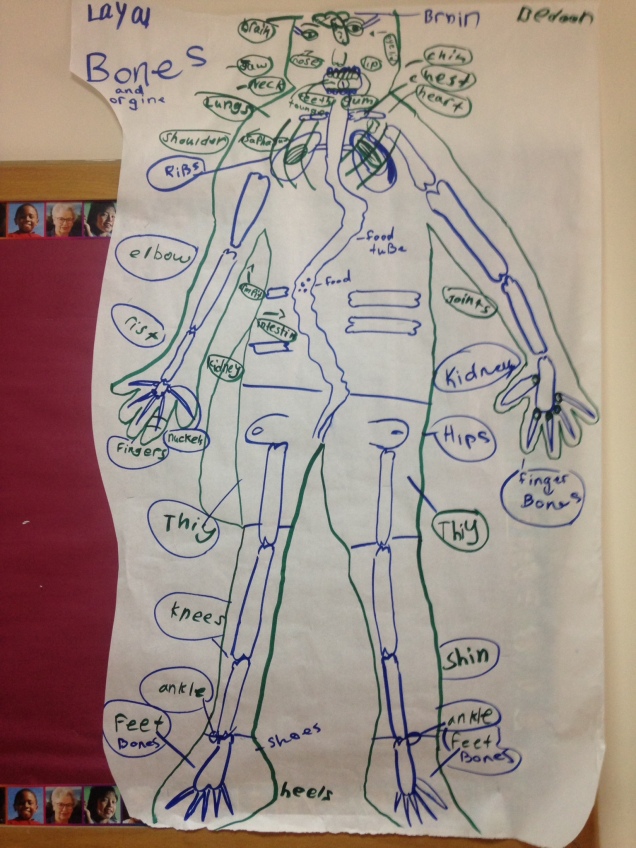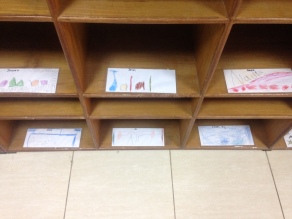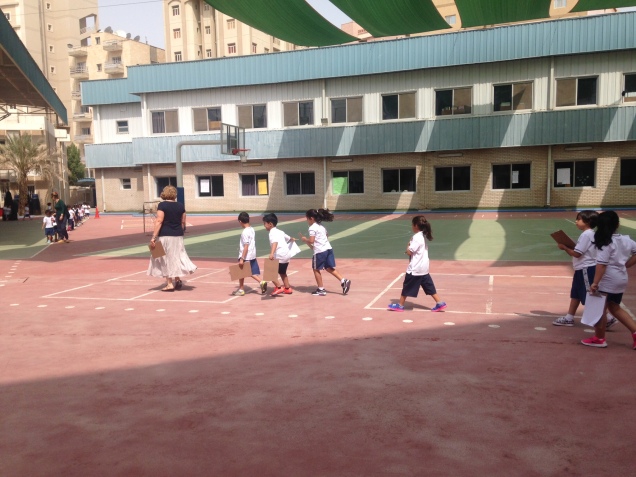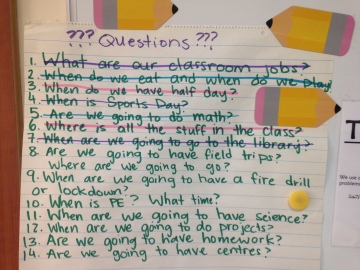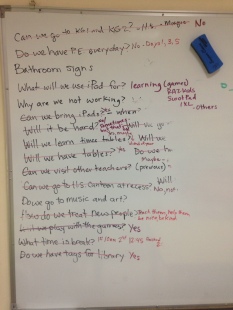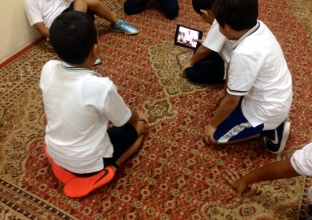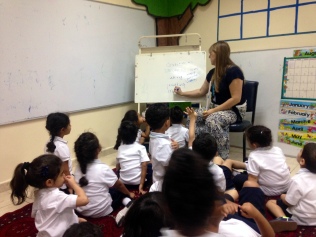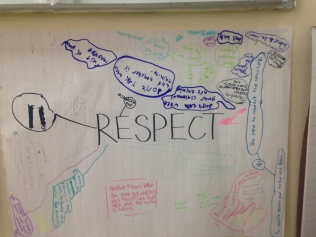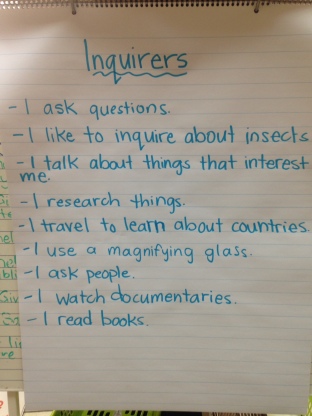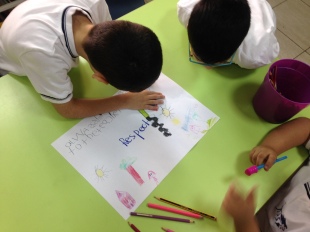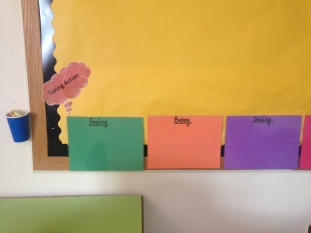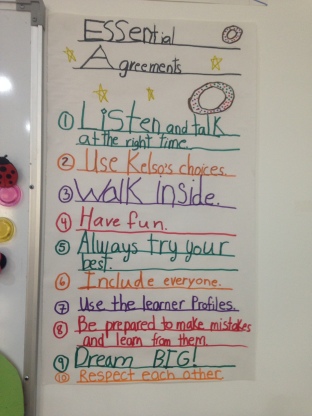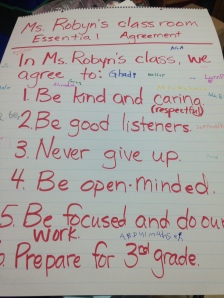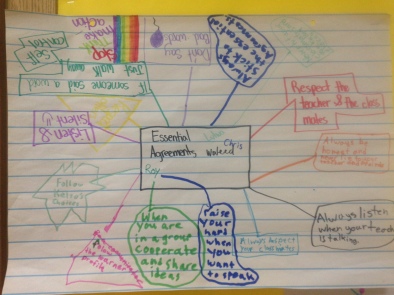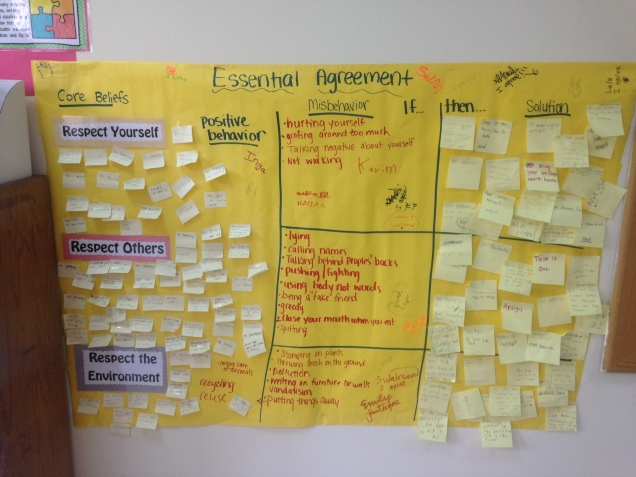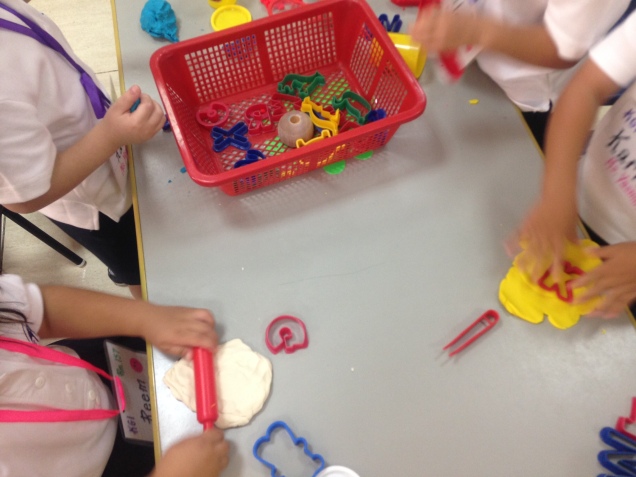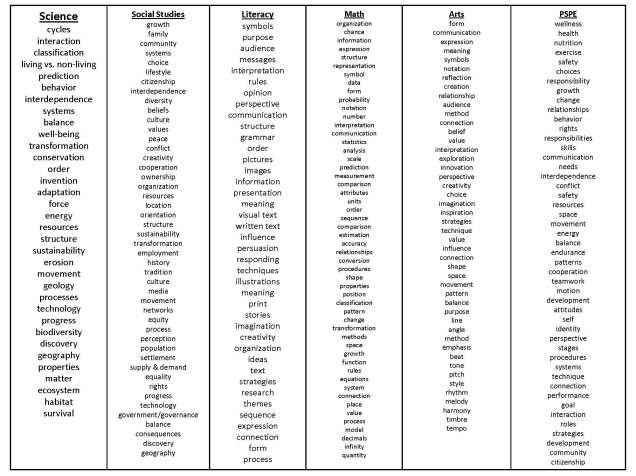At our school, we realized we had very comfortable thinking about the way we plan for Units of Inquiry. We know what we plan, we know how we plan, but we’re not sure about the last time we slowed down to think about why we plan the way we do. So we thought it was time to rock the boat and disrupt our comfortable thinking about planning and focus on the why.
We used parts of Kath Murdoch’s Inquiry Cycle to structure a teacher inquiry into planning. Here is how it went:
Tuning In: How do you think a collaborative planning meeting should be structured in order to plan for a Unit of Inquiry?
Teachers tuned into their own understanding of planning for inquiry and sketched out a sample agenda of a collaborative planning meeting. Teachers then put these agendas aside to act as a time capsule, which would allow them to refer back to how their thinking about planning changed over the course of the meeting.
Sorting Out: What are you reading that connects, extends, and challenges the way we currently plan for inquiry?
Teachers were given the following links to a variety of blog posts about planning for inquiry:
Assessing Understanding in the Planning Process
Planning for Learning
How Do You Plan?
Planning in RESPONSE to Learning
Planning for Inquiry
Planning for Inquiry: Example
How Healthy is Your Team Planning?
Planning for Concept Driven Learning
Reflecting on PYP Planners
Teachers spent 15 minutes independently sorting through these resources and recording their own discoveries based on the Visible Thinking Routine – Connect, Extend, Challenge.


Then, teachers had the opportunity to share their thoughts with one another and discuss. Common observations included:
Connections
- we start from the end and decide the conceptual understandings we want our students to have
- we design rubrics based on the key concepts
- we take time to share successes and struggles in our classrooms
- we spend time discussing and unpacking our own understanding of the big idea
Extensions
- We plan one provocation, but we should be planning a range of powerful provocations
- We reflect at the end of each unit, but could involve students in that reflection process
- We “tune in” to students’ prior knowledge but might want to pay more attention to their initial misconceptions
Challenges
- We should plan in response to learning based on students’ questions
- We should explicitly plan for the development of transdisciplinary skills
- We should resist the temptation to fill in the whole PYP planner before a Unit starts
Going Further: What parts of the PYP planner should be filled out before, during and after a Unit of Inquiry?
Thinking about the term ‘planning in response to learning’, teachers looked at a blank copy of the PYP Planner and identified which parts should be discussed and filled in prior to starting a Unit of Inquiry, which parts should be filled in on an ongoing basis throughout the Unit of Inquiry and which parts should be filled in after a Unit of Inquiry has finished. Teachers also identified the parts of the planner that should be kept from year to year and the sections that should be wiped clean.


Making Conclusions: As a team, design the agendas for collaborative PYP meetings before, during and after a Unit of Inquiry.
My fellow PYP Coordinator and myself realized that as long we were creating the agendas for collaborative meetings, we are the owners of that planning process. So we wanted to give grade-level teams ownership over creating meeting agendas based on their own understanding of what planning for inquiry should look like. Each team’s collaborative meeting agendas were different and reflected their team’s understanding of how to plan for a Unit of Inquiry.
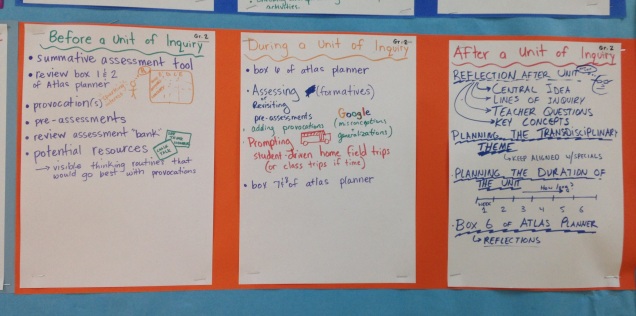

We then posted all of the team’s planning agendas in our Elementary Multipurpose Room, to allow teams to see the conclusions their colleagues made about planning for inquiry and hopefully inspire and challenge their own understanding further.
Taking Action: Now that you know what you know, what are you going to do about it?
I noted two, authentic, learner-initiated pieces of action that resulted from our inquiry into planning!
- one teacher printed out a copy of the meeting agendas and posted them in her room so that her team could use them during informal planning meetings (without the facilitation of the PYP Coordinator)
- a different teacher printed out a copy of the meeting agendas for her grade level and put them in her PYP Binder so she could bring them with her to any planning meeting she attended (formal or informal)
In the coming year, we plan to “live it, not laminate it” and actually use these agendas to structure each team’s collaborative planning meetings. Hopefully, as our collective understanding of inquiry grows and changes teams continue to reflect on and amend their planning agendas.
I wonder if any team included that process in their planning-plans? Maybe that will come about next time we reflect on and refine our collaborative planning processes!









